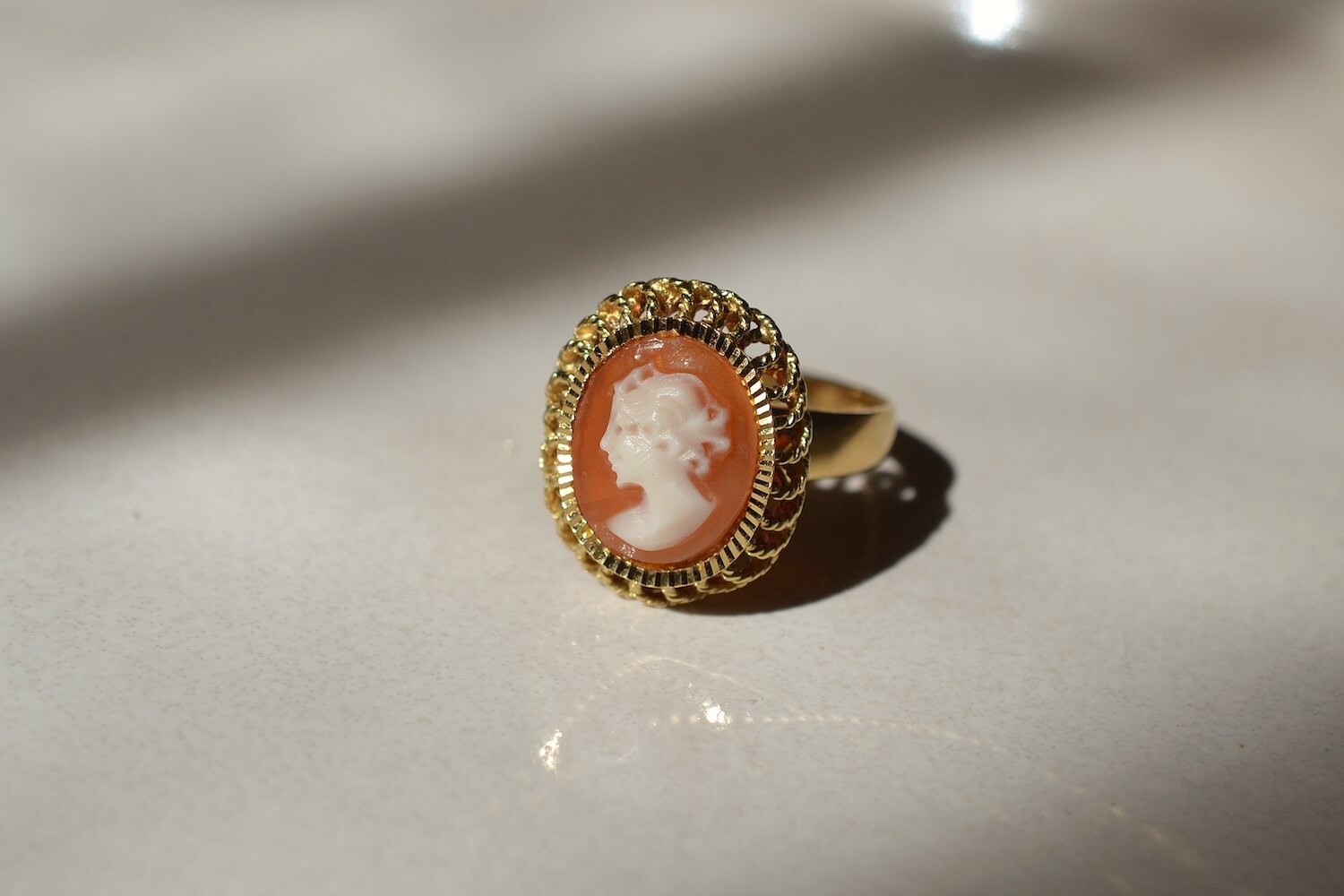In the footsteps of cameos

Today I want to talk about cameos, these ancient jewels that make us travel in the past. Their Vintage aspect (which brings us back immediately to our grandmothers) makes them real “Madeleine de Proust” jewels.
Let’s start at the beginning. The cameo is above all an engraving and the technique which allows to engrave hard stones, also called gems, is designated under the name of “glyptic” (derived from the Greek verb which means “to engrave”). It appeared as early as the 4th millennium BC in the Near East.
The engravings are then classified into two categories: intaglios, when the motif is in hollow, and cameos, when it is in relief.
In this article, we will take a closer look and focus on the second category: cameos!
Cameos in Ancient Greece
The word cameo comes from the Italian “cameo”. It has the same origin as the French word “camaïeu”, which for recall represents a gradation of colors in the same tones.

Cameos were highly valued in ancient Greece where they were carved in semi-precious stones such as onyx, sardonyx or carnelian. These stones were highly prized because they had a range of colors with significant contrasts (white, yellow, brown and even red) that the artist could exploit.
The “Tazza Farnese” is probably the most famous cameo in the world. Made of sardonyx (derived from the stone onyx), it is considered as the masterpiece of this technique and would date from the 2nd or 3rd century BC.
Cameos in Roman times
In Roman times, cameo engraving became even more refined, precise and elegant and found fertile ground in the court of the emperor Augustus (63 BC).
From this period, we can cite the cameo called “Le Grand Camée de France”, which turns out to be the largest surviving cameo of antiquity.
Beyond the incredible size (31 cm x 26.5 cm) of this work, the detail of the staging of the characters, the rarity of the stone and the extraordinary technique, make it the most precious cameo ever created.

The birth of jewels (well, we’re getting there!)
Cameos appeared during the Renaissance as jewelry (rings, pendants, brooches) but also as decorative ornaments (on boxes or mirrors for example). Usually set in a gold surround, embellished with pearls, precious stones, even diamonds, they often feature a female profile reminiscent of antiquity.
Throughout history, it is royalty that will participate in the popularization of cameos. This is the case, for example, of Napoleon Bonaparte and his wife Josephine. Very fond of this technique of engraving, they will contribute to democratize it and make it known under the Empire. At the time, the house of Nitot was the Emperor’s main jeweler. Napoleon gave him various commissions, including a cameo tiara that he gave to Empress Josephine de Beauharnais in 1811.
Over the years, marriages and inheritances, this diadem of cameos will finally reach the royal jewel box of the Swedish family by the daughter of Eugene de Beauharnais, also named Josephine, at the time of her marriage to Oscar I, King of Sweden and Norway.
This heritage from the Napoleonic era is still in the hands of the Swedish royal family.
Since the tiara has been completed with a necklace, brooch, earrings and bracelet. This ornament is now the official ornament for the events of the Swedish royalty. It was also released for the wedding of Crown Princess Victoria of Sweden in 2010.
The manufacture of cameos
With the rise of cameos in the nineteenth century, hard materials such as stones were gradually left aside for components easier to model such as shells, agate, mother of pearl, ivory, coral, lava. All natural components. It is by this criterion that one recognizes a “true” cameo.
In our time, the time of mass production and the rise of costume jewelry, cameos in non-natural materials are appearing. The engraving is often made from plastic or resin.
Nowadays, to find authentic cameos, it is possible to go to Italy where traditional shell engraving is still practiced. Another solution – which allows you to save on airfare and limit your carbon footprint – is to turn to second-hand and vintage jewelry!
If you are still not convinced by cameos, Noir Carat offers other antique pieces with different styles (and always in 18K gold).
Discover all our Vintage jewels!
You are passionate about antique jewelry and would like to discover our collections of nuggets in preview?



